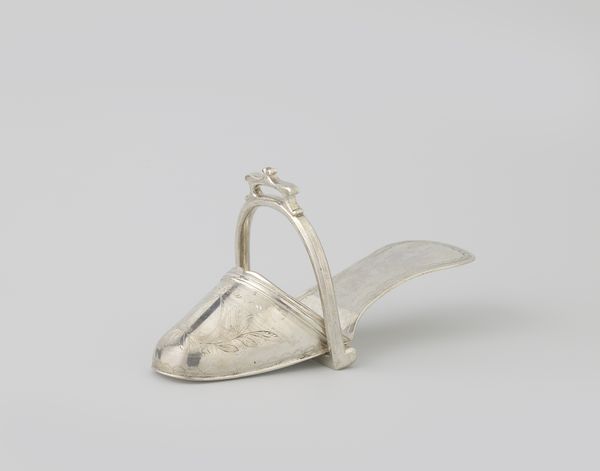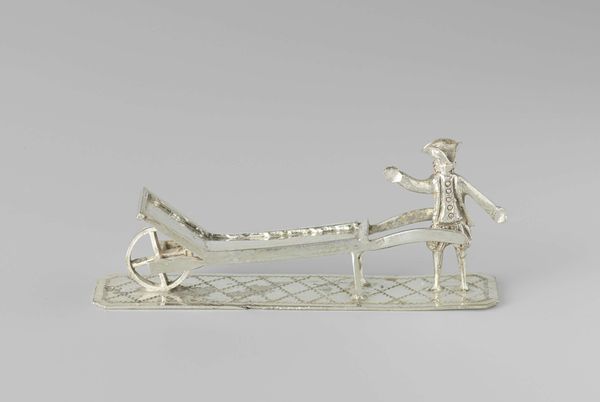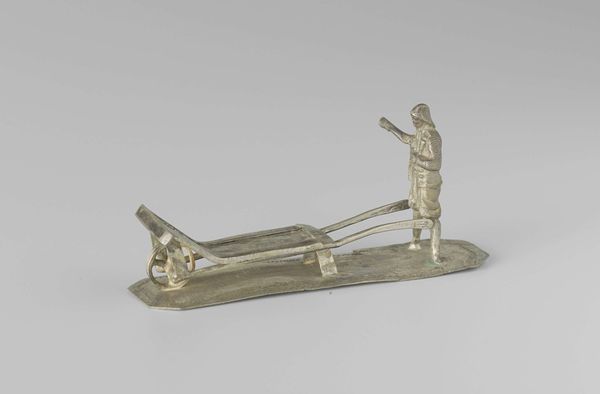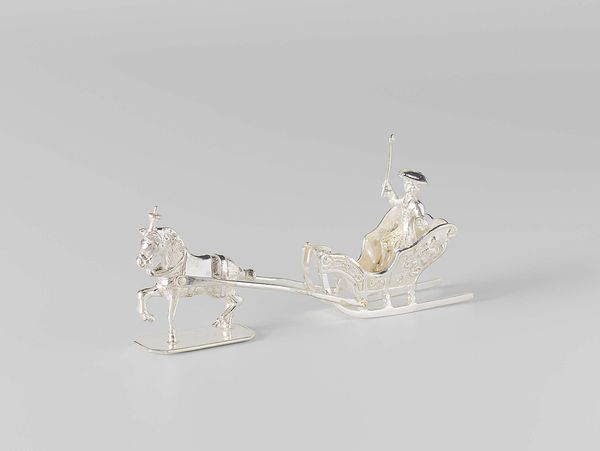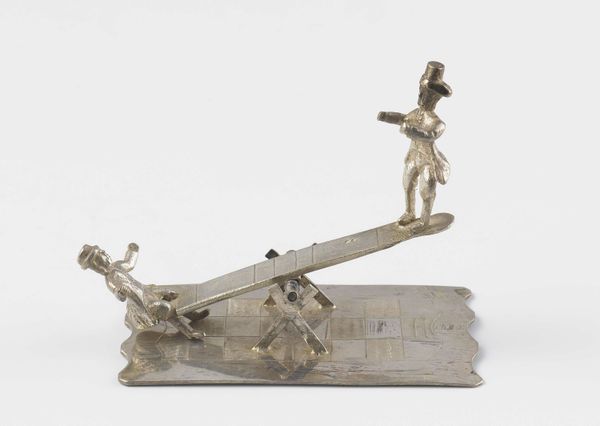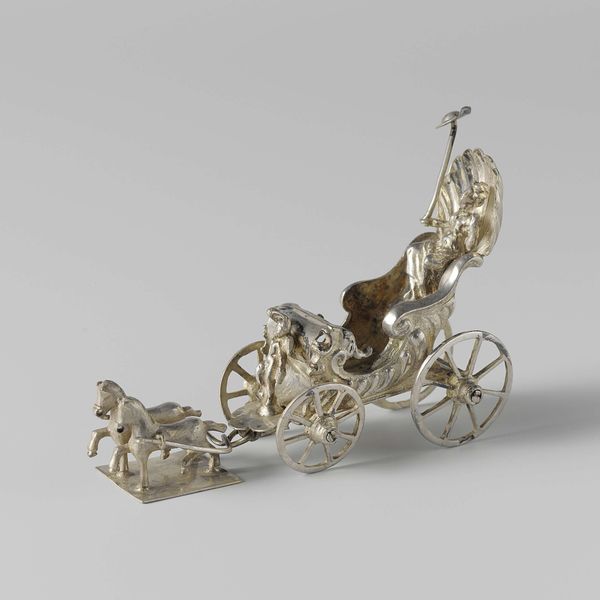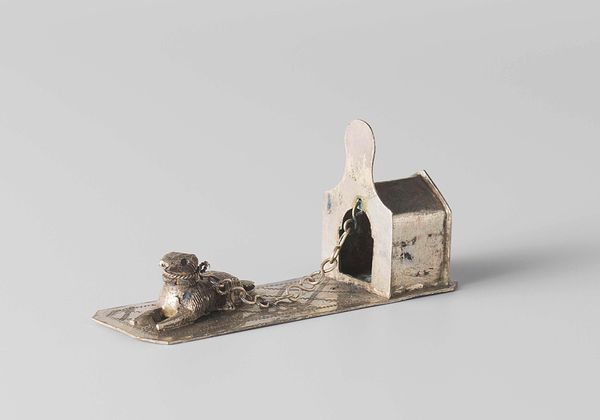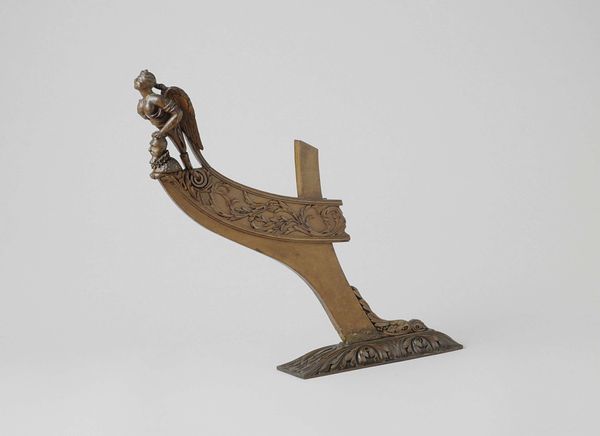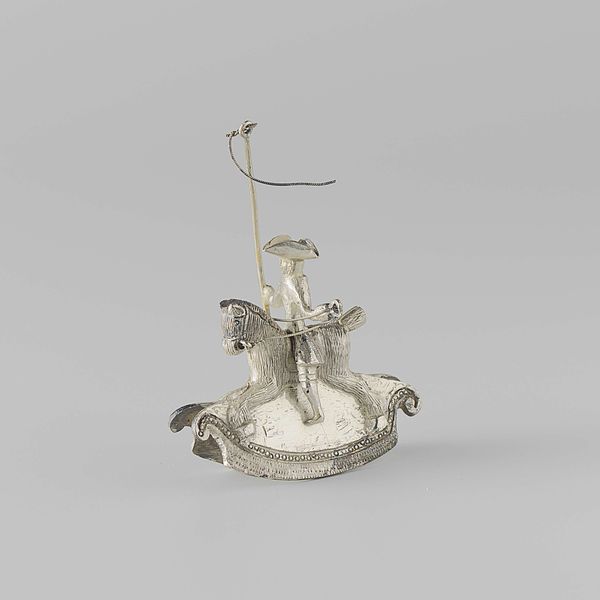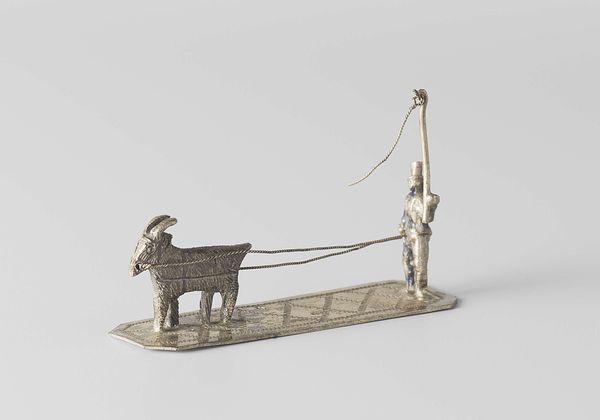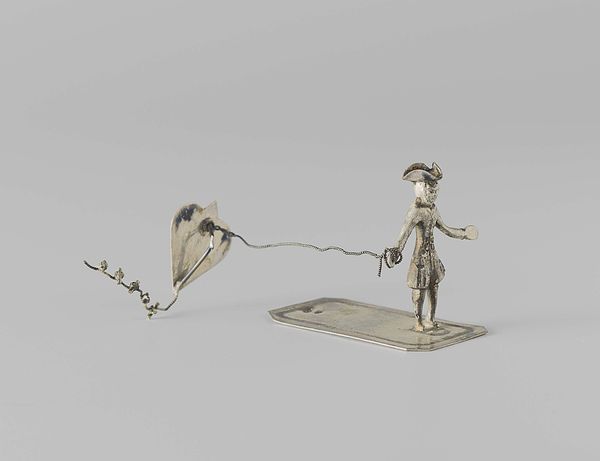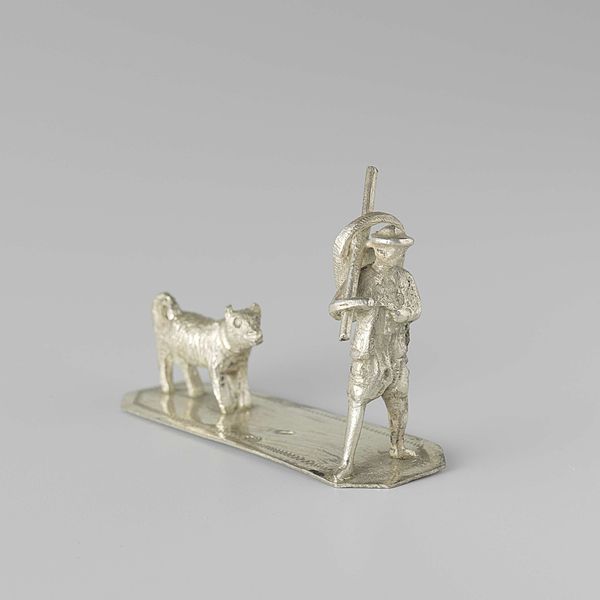
metal, sculpture
#
narrative-art
#
metal
#
figuration
#
sculpture
#
genre-painting
#
decorative-art
#
miniature
Dimensions: length 8.1 cm, width 2.7 cm, height 3.5 cm, weight 29.63 gr
Copyright: Rijks Museum: Open Domain
Editor: Here we have "Prikslede," a metal sculpture by W. Freen, made around 1856 to 1858. It’s so tiny and delicate. What strikes me is the almost theatrical quality of this little scene. What stands out to you? Curator: The materiality is definitely what draws my attention first. It’s crucial to consider the economics and social aspects around silver at the time. This wasn’t a ubiquitous material. The labor involved, the craftsmanship… who was commissioning and consuming objects like this, and what did it signify about their place in society? Editor: So it's less about the depiction of the figures and more about what the silver itself represents? Curator: Precisely. Look at the details - the meticulously crafted clothing. This wasn’t just about creating an object; it was about demonstrating a certain level of artistry and wealth. It transcends "mere" genre painting because the materials themselves become the narrative. Who would have been employed in the entire chain of making and consuming? And for whom was their labor? Editor: I hadn't considered the economics behind it. It does give it a new dimension to think about. I was too focused on the apparent storytelling, I suppose! Curator: Often, examining the means of production illuminates much more than the subject being depicted. Consider what it suggests about social relations at that time. Where does it challenge our traditional understandings of what constitutes 'high art' versus mere craft? Editor: That's a very insightful way of looking at art. I'll definitely pay closer attention to materials and labor from now on! Curator: Good. Always ask, "What did it take to make this?", and "Who benefitted?". The answers are often more telling than you think.
Comments
No comments
Be the first to comment and join the conversation on the ultimate creative platform.
